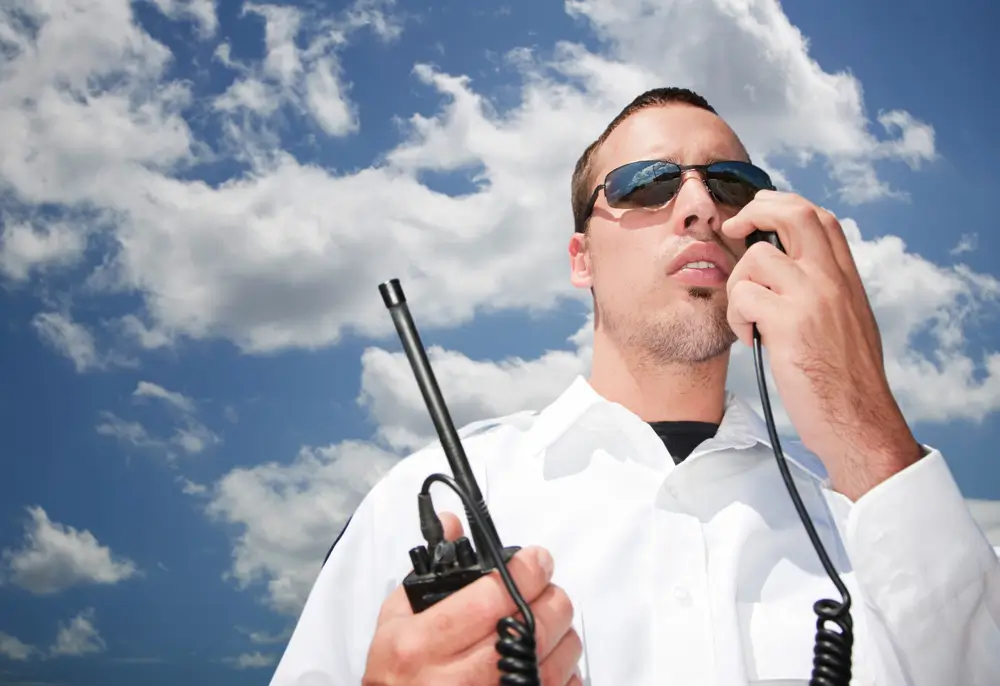Facilities today, face an array of threats. These include vandalism, theft, security breaches, and even the risk of terrorism. Securing your building, nowadays, is more than a responsibility—it’s a crucial element of your operation. And while the spotlight often falls on the rise of cybercrime, it’s vital not to neglect the significant importance of physical security.
Key Takeaways
- Physical security assessments identify vulnerabilities and improve safety in organizations.
- The process includes planning, site surveys, vulnerability identification, risk analysis, recommendations, and implementation.
- Challenges involve understanding risks, technological integration, resistance to change, ongoing security maintenance, and budget constraints.
Understanding Physical Security Assessments
Physical security assessments involve a thorough analysis of existing security measures to identify weaknesses and suggest enhancements, focusing on aspects like access control and emergency response. They are essential for safety, regulatory compliance, and boosting employee productivity.
What is a Physical Security Assessment?
A physical security assessment is a thorough review and analysis of an organization’s existing security measures. Its primary goal is to identify vulnerabilities in the physical security framework and suggest improvements. This process involves evaluating various aspects like access control, surveillance systems, environmental design, and emergency response protocols. It’s a proactive approach to preemptively identify and mitigate potential threats.
Why is it Important?
It is crucial for addressing a wide range of threats, from theft to terrorism, ensuring safety, compliance, and a secure working environment. Physical security assessments help in anticipating these threats and preparing for them. They are essential not just for compliance with regulatory standards but also for ensuring a safe working environment, thereby enhancing employee productivity and confidence.
The Process of Conducting a Physical Security Assessment
The assessment process includes detailed planning, on-site surveys, vulnerability identification, risk analysis, development of tailored recommendations, and the compilation of a comprehensive report for implementation. The goal is to identify vulnerabilities and recommend enhancements to strengthen overall security. Here’s a step-by-step guide to the process:
1. Planning and Preparation
The first step in conducting a physical security assessment is thorough planning. This involves defining the scope of the assessment, identifying the areas that need to be examined, and gathering all necessary information about the facility. It’s also crucial to assemble a team of experts who are skilled in various aspects of physical security.
2. Conducting a Site Survey
A detailed site survey is the core of the assessment process. The team visits the facility to evaluate existing security measures. This involves inspecting physical barriers, access control systems, surveillance equipment, and other security features. The team also reviews security policies and procedures currently in place.
3. Identifying Vulnerabilities
As the team conducts the site survey, they identify and document any vulnerabilities in the security system. This could include gaps in surveillance coverage, weaknesses in access control, or insufficient emergency response protocols.
4. Risk Analysis
After identifying vulnerabilities, the next step is to conduct a risk analysis. This involves determining the likelihood of various security threats and the potential impact they could have on the organization. The risk analysis helps prioritize the vulnerabilities based on their severity.
5. Developing Recommendations
Based on the findings from the site survey and risk analysis, the team develops a set of recommendations to address identified vulnerabilities. These recommendations are tailored to the specific needs of the facility and can range from upgrading equipment to revising policies and procedures.
6. Reporting and Implementation
The final step is to compile a comprehensive report that outlines the findings and recommendations. This report is presented to the management team or facility owners, who will then decide on the implementation of the suggested measures.
Common Challenges and Solutions in Physical Security Assessments
Physical security assessments are critical for safeguarding assets and people, but they often come with their unique set of challenges. Understanding these challenges and knowing how to address them is key to conducting effective and comprehensive assessments.
Challenge 1: Inadequate Understanding of Risks
One of the most significant challenges is the lack of a thorough understanding of the risks specific to the facility or organization. Without a clear grasp of potential threats, security measures may be inadequate or misdirected.
Solution: Conduct a detailed risk analysis tailored to the specific context of the facility. This includes identifying potential internal and external threats, assessing the likelihood of their occurrence, and understanding their potential impact.
Challenge 2: Resistance to Change
Employees and management may resist changes proposed after an assessment, especially if these changes disrupt established routines or require significant resource allocation.
Solution: Effective communication is key. Clearly explain the necessity of the changes and involve relevant stakeholders in the planning process. Demonstrating the value and importance of these changes can facilitate smoother implementation.
Challenge 3: Maintaining Ongoing Security
Problem: Ensuring that security measures remain effective over time can be difficult, especially in dynamic environments where threats can evolve rapidly.
Solution: Implement a regular review and update process for security measures. This includes continuous monitoring, periodic re-assessment, and staying informed about emerging security threats and technologies.
Challenge 4: Budget Constraints
Often, the biggest hurdle in implementing recommended security measures is budgetary constraints.
Solution: Prioritize recommendations based on risk and impact. Develop a phased implementation plan that allows for gradual improvement over time. Also, explore cost-effective security solutions that do not compromise on essential safety requirements.
Best Practices for Effective Physical Security Assessments
- Tailored Approach: Customize the assessment to the specific needs and context of the facility or organization.
- Stakeholder Involvement: Engage all relevant stakeholders, including management, security staff, and employees, throughout the assessment process.
- Comprehensive Risk Analysis: Conduct a thorough analysis of potential threats and vulnerabilities, considering both internal and external factors.
- Technology Integration: Utilize the latest security technologies, ensuring they are integrated seamlessly with existing systems.
- Continuous Improvement: Treat physical security as an ongoing process, regularly reviewing and updating security measures.
Closing Thoughts
When it comes to physical security, being proactive rather than reactive is key to safeguarding your business, employees, and self. A thorough risk assessment helps close security gaps and enhance safety before incidents occur. A secure environment not only protects but also boosts employee performance and peace of mind.
Walton Security provides expert professionals to assess and mitigate risks, ensuring your business is well-protected against potential threats.
Hire Walton security guards for your facilities’ security.
You can reach us | By Phone | 03 9028 8098
Website | www.waltonsecurity.com.au and you can chat to us from here
Email | info@waltonsecurity.com.au





